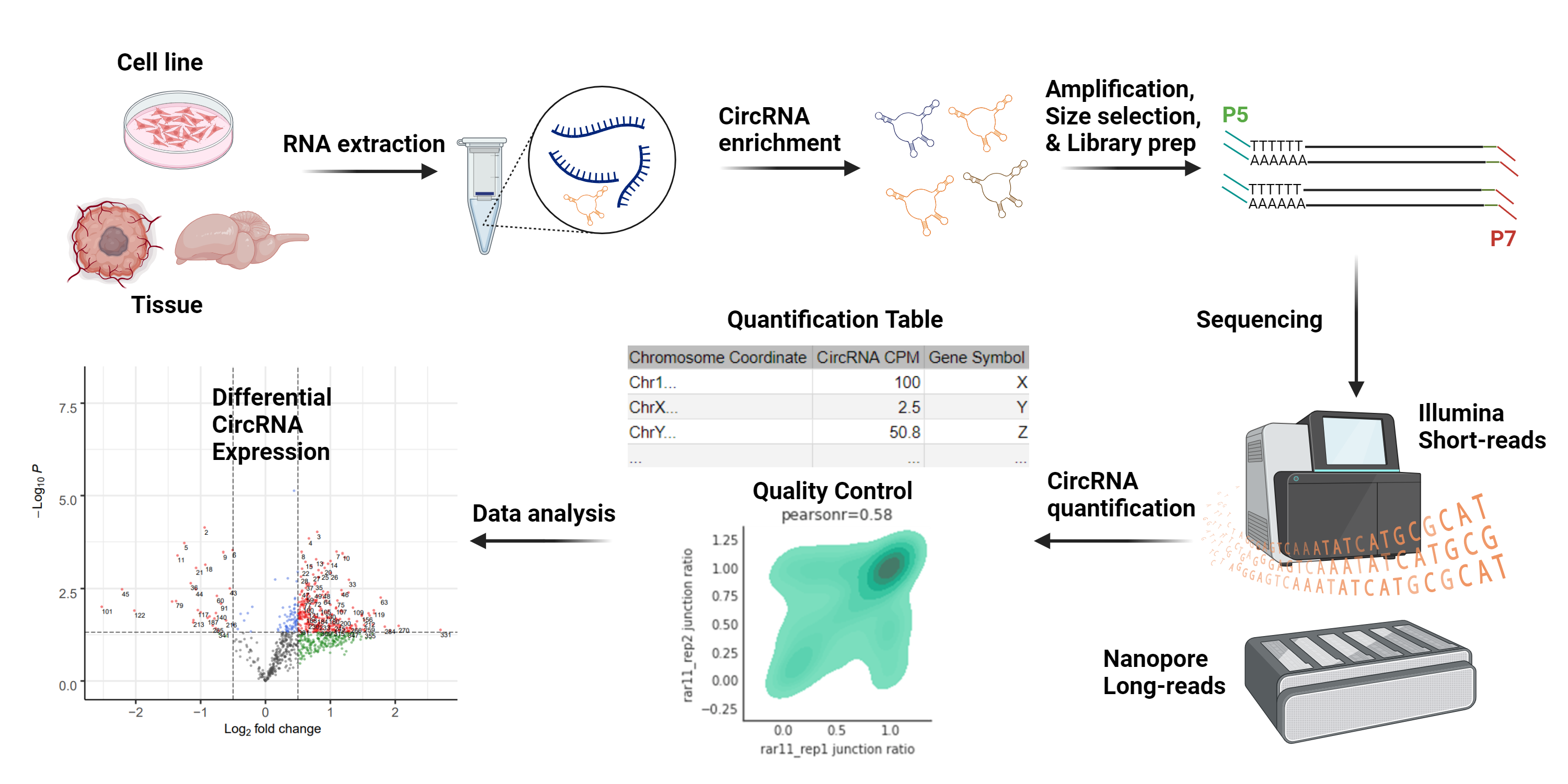Technology
- Enhanced CLIP sequencing (eCLIP & Ribo-eCLIP)
- Circular RNA sequencing (circRNA-seq)
- RNA Synthesis

Despite their low abundance in cells, some circRNA molecules are found to be even more highly expressed relative to their linear counterpart. This expression is very cell-type specific, making them promising biomarkers for both basic research and diagnosis. We recently developed a highly sensitive method (manuscript in prep) that significantly improves the sensitivity and lowers the input requirement as compared to pre-existing circRNA sequencing methods. Our center provides end-to-end service or collaboration to help identify novel circRNA biomarkers in different biological and clinical contexts and study their functional roles.
CircRNAs also hold a bright future as a therapeutic vector for RNA therapies over mRNAs because they are more stable and less immunogenic than linear mRNAs. Deepening our knowledge of circRNA lifecycle, specifically the regulation by trans factors including RBPs, is critical for designing better circRNA vectors to make them more stable and highly translated. Our center actively develops new technologies to study RBP-circRNA interactions and generate insights into novel circRNA therapeutic vector designs.